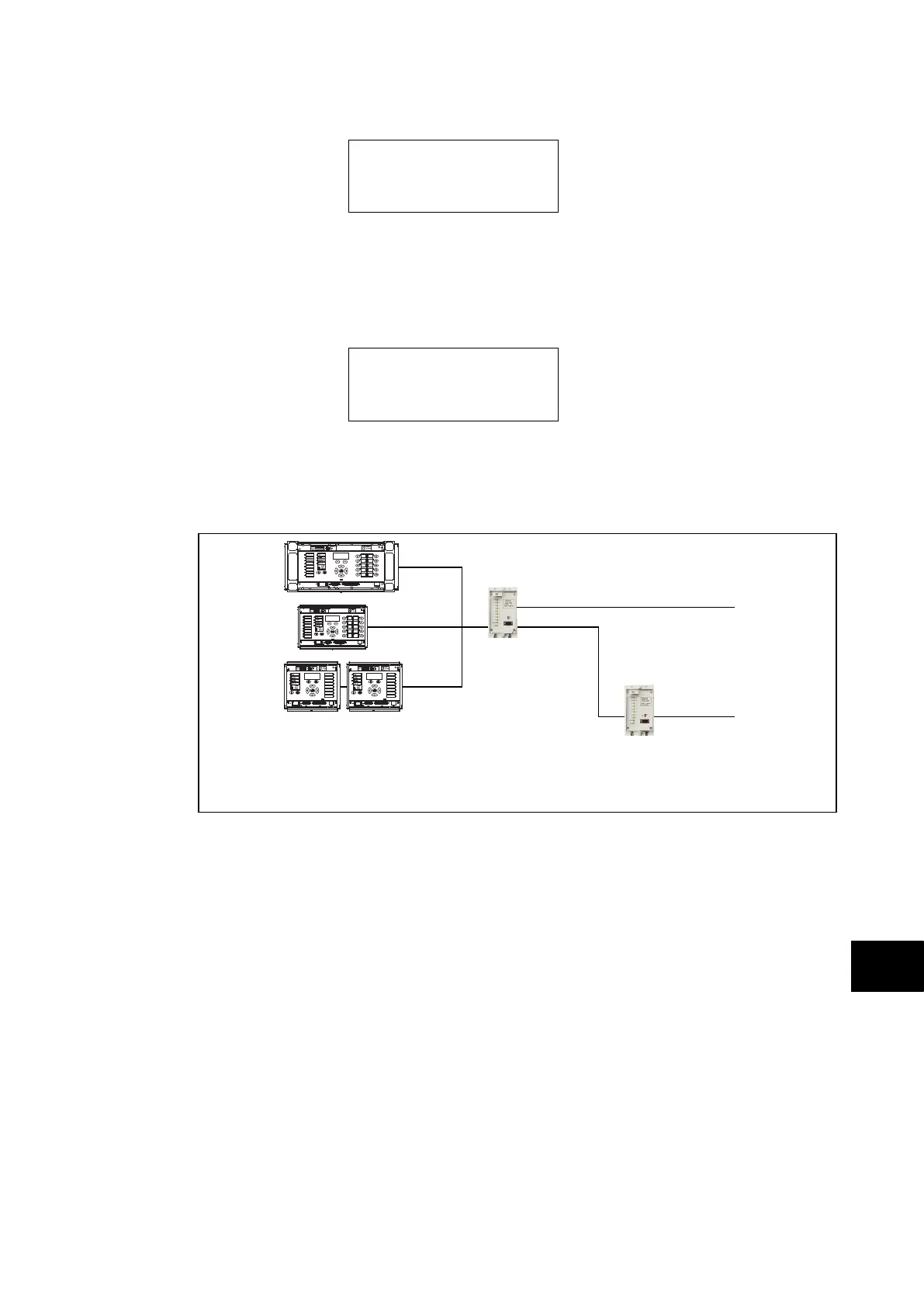P74x/EN SC/N
1, P742, P743 (SC) 13-
The next cell down controls the inactivity timer.
RP2 inactivity timer
15 mins.
The inactivity timer controls how long the relay will wait without receiving any messages on
the rear port before it reverts to its default state, including revoking any password access
that was enabled. For the rear port this can be set between 1 and 30 minutes.
In the case of EIA(RS)232 and EIA(RS)485 the next cell down controls the baud rate. For
K-Bus the baud rate is fixed at 64kbit/second between the relay and the KITZ interface at the
end of the relay spur.
RP2 baud rate
19200
Courier communications is asynchronous. Three baud rates are supported by the relay,
‘9600 bits/s’, ‘19200 bits/s’ and ‘38400 bits/s’.
If the second rear port is not used, this can also be provided with a KITZ201.
Idiff (A,B,C) + Ibias (A,B,C) + Inputs + Outputs + Events + Disturbance
P741
Add 6
CU & PU Local PC
Port 2 RS 232
P743 Kbus/courier Port 3 Port 1 Kbus/courier
Add 7
Kitz201
Add 2
P742
Add 8,
IEC 103 / Fibre
Kbus/courier Port 3 Port 1 or Vdew/IEC Master
Per PU connection: I (A,B,C) + Inputs + Outputs + Events + Disturbance Port 2
IEC 103 / RS 485/RS
Kitz274
Add 1
The KITZ201 can be used to communicate with upto 32 relays but it is prefarable to use 1 kitz201 per KITZ274 to not slow down the commun
ication
P3797ENb
FIGURE 5: SECOND REAR PORT EIA(RS)232 EXAMPLE
Note: The KITZ201 redates the events
1.4 Ethernet communication
1.4.1 Legacy protocols
It is possible to communicate through an Ethernet network using a I4XS4UE (refer to
P4x4/EN REB user guide for Redundant Ethernet board connexions).

